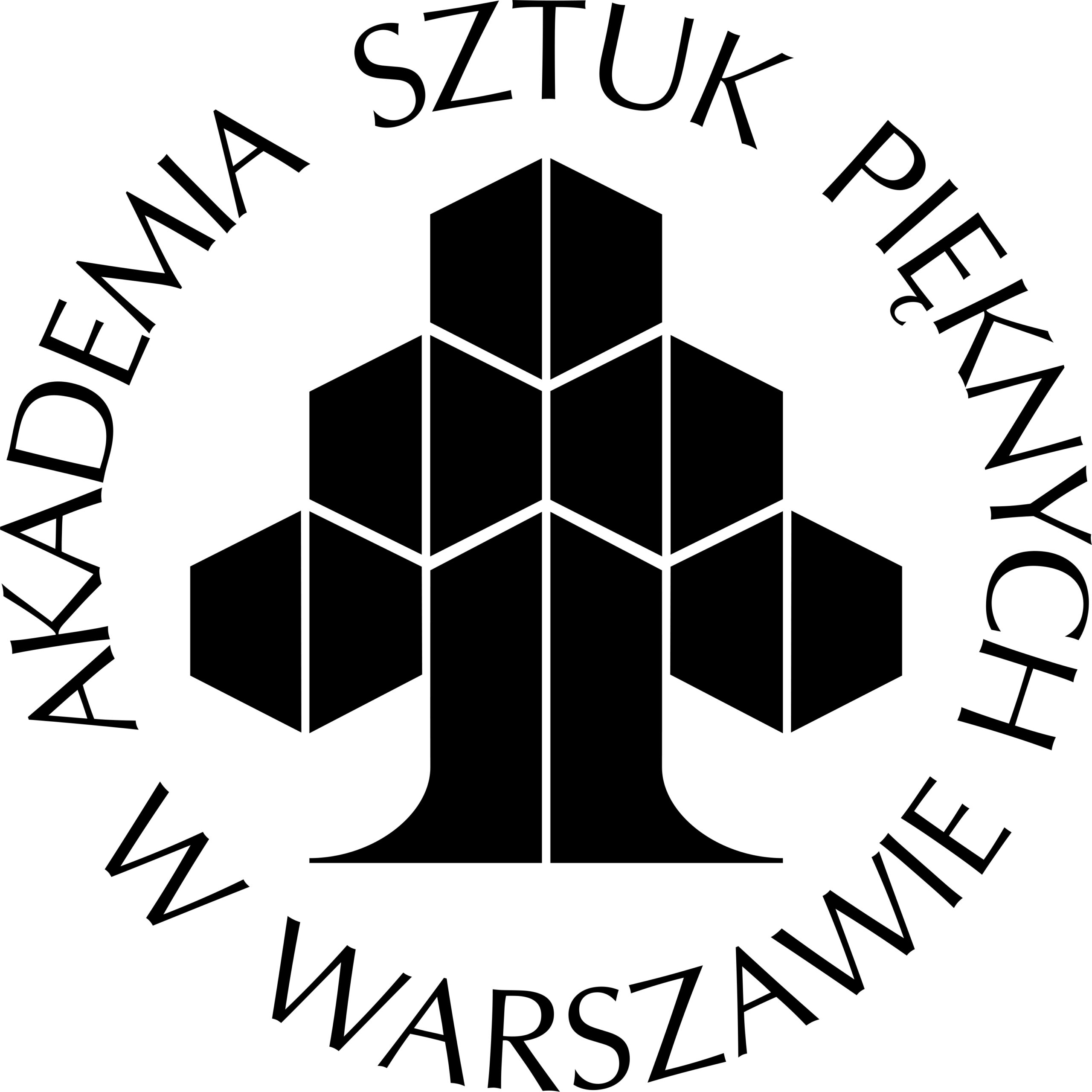Idea
This event will focus on the theory and practice of new ecological approaches to architectural design and construction in the face of evolving social, environmental, and economic conditions. It will explore potential solutions to the challenges contemporary architecture faces, particularly in relation to living spaces. Through thematic presentations centered on the ethics of care, non-aesthetic values in design processes, and shifts in the language used to describe architecture, the conference aims to investigate possibilities for responsible design informed by ecological and cultural awareness.
According to available data, the construction industry generates enormous amounts of waste and CO₂ emissions, while natural resources are becoming increasingly scarce. Despite these alarming realities, many architectural choices remain driven primarily by aesthetic considerations, prioritizing visual delight over sustainability. At the same time, it is now evident that both aesthetics and architectural discourse can be leveraged to improve long-term prospects for human well-being.
The conference program will revolve around key concepts such as narrative, care, and methodology. The interconnections and interplay between these ideas will provide the structural framework for the event. Discussions will encompass the current architectural paradigm, ecological shifts and transitions, the language of architecture and spatial description, and new design approaches in response to climate change and diminishing resources. Participants will explore practical solutions, ecological design strategies, and concepts for environmental regeneration as integral components of new architectural narratives.
Language becomes a tool for expressing care for our planet. This conference will provide an opportunity to delve into the perspectives of researchers and designers shaping the future by expanding the conceptual framework used to describe architectural practice. It will honor the heritage of the past while emphasizing responsibility for the world and its resources. Additionally, the event will serve as a platform for discussing potential paradigm shifts in architectural design methodologies.
One of its primary objectives is to develop a fresh perspective on architecture—one that could lead to a paradigm shift, balancing utopian visions with practical change. The event promotes interdisciplinary collaboration among art, design, theory, and philosophy, enriching the ongoing debate on the future of architecture.
All participants will have the opportunity to reflect on the potential changes in the design process, whether there is room for unpredictability and failures, whether a stance of care can become a working method, and what new narratives could mean in the context of architecture. By fostering these discussions, the conference seeks to expand the field of architectural analysis and interpretation through new concepts and narratives, particularly those that have been previously overlooked or marginalized within the dominant paradigm of large-scale, global, efficient, and visually striking projects.
The event will also raise ecological and cultural awareness, advocating for the design of spaces that respect both natural and cultural heritage while considering the needs of future generations. It will provide a platform for showcasing practical solutions and ecological strategies aimed at minimizing architecture’s negative environmental impact in response to contemporary social, environmental, and economic challenges.
Programme
Thursday, November the 6th, 2025
9:00 – 10:00
opening of the conference reception
10:00 – 10:15
ceremonial opening of the Conference: Dean of the Faculty of Interior Design, Academy of Fine Arts in Warsaw: prof. Bazyli Krasulak
10:15 – 10:45
11:05 – 11:25
11:25 – 11:40
discussion – moderation: Michał Sikorski, TŁO
11:40 – 12:10
coffee break
12:10 – 12:40
12:40 – 13:00
13:00 – 13:20
13:20 – 13:35
discussion – moderation: Michał Sikorski, TŁO
13:35 – 15:00
break
15:30 – 15:50
15:50 – 16:05
discussion – moderation: Michał Sikorski, TŁO
16:05 – 16:35
17:10 – 17:25
discussion and closing of the 1st day of the Conference – moderation: Michał Sikorski, TŁO
Friday, November the 7th, 2025
09:00 – 10:00
registration of participants
10:00 – 10:15
opening of the 2nd Day of the Conference
10:15 – 10:45
11:05 – 11:20
discussion – moderation: Michał Sikorski, TŁO
11:20 – 11:50
coffee break
11:50 – 12:20
13:00 – 13:15
discussion – moderation: Michał Sikorski, TŁO
13:15 – 14:30
break
15:20 – 15:35
discussion – moderation: Michał Sikorski, TŁO
16:05 – 16:20
discussion and closing of the Conference – moderation: Michał Sikorski, TŁO
Speakers
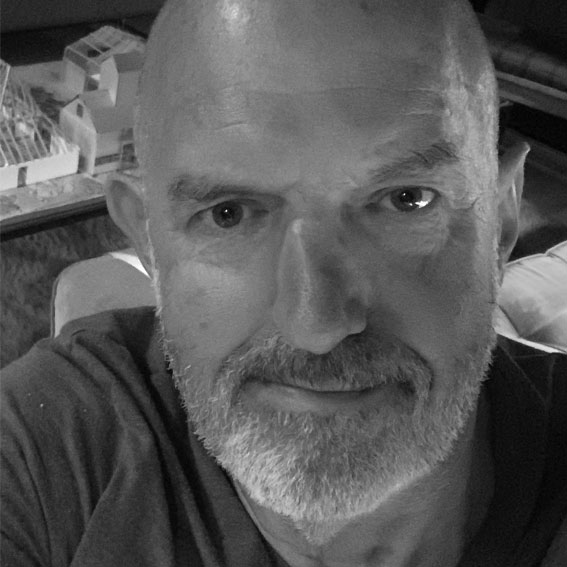
Marcus Lee
was director at Richard Roger’s Partnership (1982-2001). He worked on a range of major projects including Lloyd’s of London, Heathrow Terminal 5 and Madrid’s Barajas Airport. He led the Millennium Exhibition Dome and the Greenwich Peninsula regeneration masterplan. Marcus co-founded FLACQ (2005-2010). Award winning projects included the Brislington Enterprise College, Olympic Velodrome competition and Morecambe Central Promenade for Urban Splash. His design for a private house in the Scottish Highlands won an RIAS/ RIBA award in 2015. After spells as director at Glenn Howells Architects, Arup Associates and later Nordic Office of Architecture Marcus established LEEP Architects in 2014. Current projects include the transformation of agricultural buildings and a former propeller factory into homes, an eco-resort in Alentejo, a mixed use office/hotel redevelopment in Madrid, 250 apartments above a public transport interchange and a number of private houses. An emphasis on environmental responsibility, re-purposing building materials, adaptive re-use and responding to urban and rural contexts represents the ethos of the practice’s approach. He has been a visiting tutor at number of schools of architecture including more recently Westminster University and Bydgoszcz University of Technology.
Transform, not demolish.
The climate crisis puts ever increasing demands on the architectural profession . While the challenges are far reaching, there is at the same time an exciting new wave of building designs emerging from the milieu! We have been revisiting the idea of ‘ New Life for Old Buildings’. Adaptive Reuse is the new buzz expression.This approach extends the life of buildings, reduces waste and can preserve historical or architectural significance. It’s a sustainable alternative to traditional demolition and new construction, offering benefits like lower costs and reduced environmental impact. Change of use from commercial to residential is accepted as permitted development. In the UK there is a surplus of office and retail space in city centres and yet there is a chronic shortage of housing .The fact that many buildings remain empty is as much to do with increased building costs as poor government legislation which incentivises new build over conversion. Repurposing – recognising that there is much embodied energy in existing building stock that can be repurposed where possible, changes of use under planning law is often required . Keeping and repairing all that is of value in buildings but also the landscape and immediate context has been our focus.
Sustainability – Adaptive re-use promotes environmental responsibility by reducing waste , conserving resources and minimising carbon emissions associated with new build.
Agri-tecture – We have explored as a case study , the change of use of some agricultural buildings into residential, creating a home but also work studios, making spaces and open and covered outdoor useable areas. It has been an experiment in transformation rather than demolition where we have endeavoured to retain the agricultural ‘ look and feel’ – Agri-tecture – building within the enclosures, new structures and making openings into windowless buildings to structure light.
Economic Benefits – It can be a cost-effective alternative to new construction, especially for developers and communities.
Social Benefits – Adaptive Reuse-use can revitalise neighbourhoods , create jobs and provide affordable housing among other social benefits.
In essence adaptive re-use is a versatile approach to building use that offers a compelling combination of sustainability heritage preservation and economic benefits.
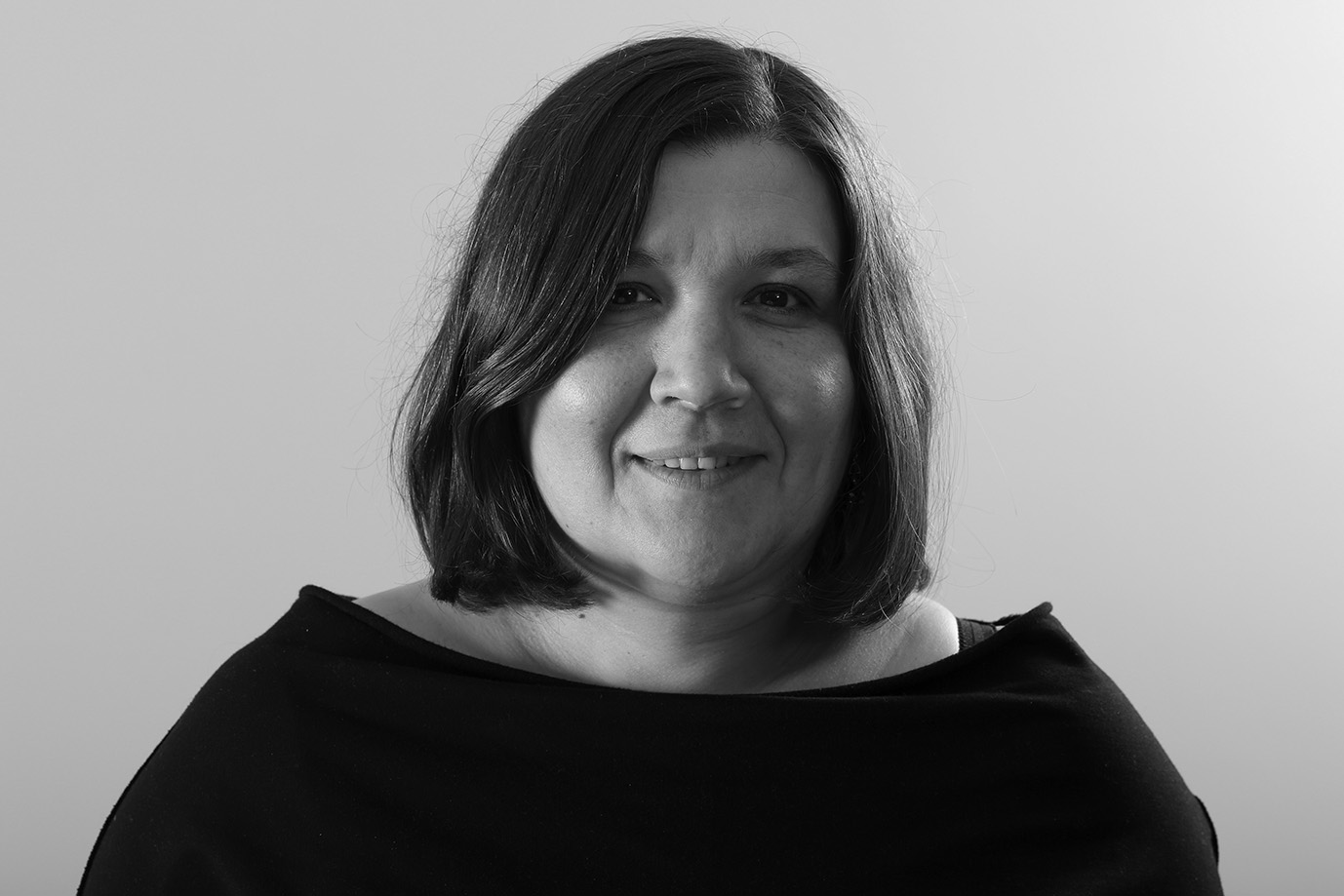
Dorota Leśniak – Rychlak, PhD
Editor-in-chief of the quarterly Autoportret. Pismo o dobrej przestrzeni (Self-Portrait. A Journal on Good Space), published by the Małopolski Institute of Culture in Kraków. Founder and president of the Architecture Institute Foundation. Curator and co-curator of numerous architectural exhibitions, including Impossible Figures – the Polish Pavilion at the 14th Venice Architecture Biennale, Finally in Our Own Home. The Polish House in Transformation, Warsaw Under Construction Festival at the Museum of Modern Art. Initiator and editor of publications from the canon of architectural theory and practice, including: Peter Zumthor, Thinking Architecture (Kraków: Karakter, 2008), Juhani Pallasmaa, The Eyes of the Skin (Kraków: Architecture Institute, 2012), and Juhani Pallasmaa, The Thinking Hand (Kraków: Architecture Institute, 2016), as well as editor of Modernist Texts. An Anthology of Polish Architectural Theory and Criticism 1918–1981 (Kraków: Architecture Institute, 2018). In 2019, she published the book Finally in Our Own Home (Kraków: Architecture Institute, 2019), dedicated to housing transformations in Poland during the period of transition.
The Power of the Helpless – How to write about architecture in the context of the climate crisis.
The climate catastrophe is a hyperobject – the scale and complexity of the threats posed by global warming evoke a sense of helplessness. Similar emotions arise when we analyze the impact of architecture on processes that endanger the planet. Narratives about destructive concrete, high-emission construction, impending disaster, and the impossibility of practicing architecture ethically can be overwhelming. Visions of apocalypse, warnings, and moralizing tones do not change reality, while most of the industry continues with business as usual. Perhaps – though I write this hesitantly – we need a new story.
I do not feel that I can propose it, but I try to indicate its possible areas. In the context of architecture, these include practices of care and regeneration, seeing cities as crisis infrastructures, and introducing a political dimension to design. I look for hope in narratives about architecture of microclimates, in the reuse of materials and buildings, in neo-vernacular approaches, and in the power of natural regeneration. I also want to examine how to speak and write about these phenomena: how to deepen understanding of the world, admit our helplessness, and take action starting from what already exists.
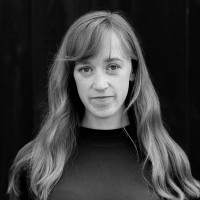
Katherine Allen
is a communications strategist and researcher interested in the intersection of architecture, language, and spatial politics. She has led editorial strategy and public engagement at international studio including MVRDV, 3XN GXN, and Henning Larsen and has held positions in publications/institutions including Metropolis Magazine, ArchDaily, and Architecture for Humanity. She authored the Henning Larsen monograph It Begins with Curiosity and co-edited Aware: Reflections on the Agency of Architecture, a critical companion to the 2024 exhibition of the same name. She is interested in how language operates as a political tool in the built environment: shaping how architecture is understood, legitimised, and contested. For her, writing is a form of designing, a way to translate, clarify, and orient ideas across discplines and publics.
Speaking of Architecture: Tracing the drift of language in the built environment.
In contemporary architecture, language is rarely neutral. Terms like sustainability, community, and regeneration appear across proposals, policy frameworks, marketing copy, and competition briefs, often without shared definitions or demonstrable commitments. Rather than clarifying intent, these words obscure it. Their opacity enables architectural practices to maintain a rhetorical posture of care while sidestepping the burden of meaningful reform and continuing to operate within extractive, growth-driven systems.
This talk introduces a developing research project, tentatively titled Keywords for a New Architecture, which traces the shifting meanings of such terms as they have evolved through architectural discourse. It asks: When did these words enter architecture? What meanings did they carry then, and how have they changed? And what do their denotative and connotative drifts reveal about the ideological role language plays in design and development?
The project is grounded in both professional experience and personal estrangement. I have spent the past decade working at the intersection of language and architecture, writing and editing for studios and publications. Yet in recent years I have felt that language slip: words I once used with confidence now feel hollowed out or stretched thin, more useful for persuasion than for precision. This project is an attempt to recalibrate that vocabulary, to reclaim some clarity in how we describe the built world.
The presentation moves from a survey of terms, to thematic clusters, and finally to a close reading of one keyword – showing how architectural vocabulary has become a rhetorical substitute for reform. By interrogating these contradictions, the project lays the groundwork for a critical lexicon: a public-facing resource that exposes how architectural discourse legitimises certain futures while foreclosing others, and seeks to align our language more closely with care, ecological literacy, and accountability.
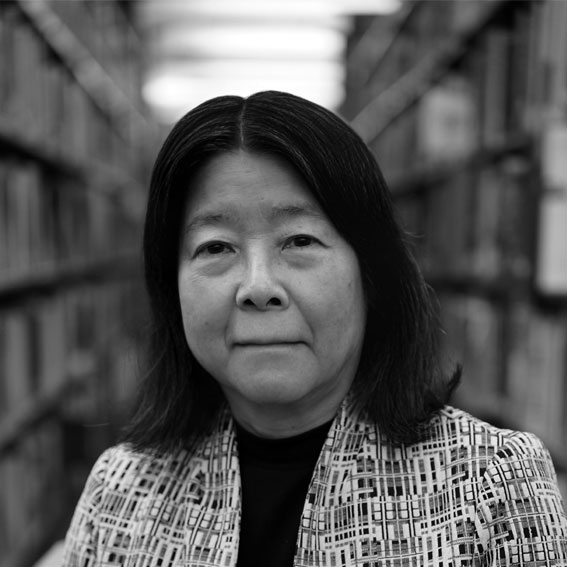
Yuriko Saito, PhD, professor emeritus
is Professor Emerita of Philosophy at the Rhode Island School of Design, USA. Born and raised in Japan, she received a Ph. D. in Philosophy from the University of Wisconsin-Madison. Her research areas are everyday aesthetics, Japanese aesthetics, and environmental aesthetics. She published Everyday Aesthetics (Oxford University Press, 2007, soon to be translated into Slovak and Spanish), Aesthetics of the Familiar: Everyday Life and World-Making (Oxford University Press, 2017, awarded the outstanding monograph prize by the American Society for Aesthetics in 2018), Aesthetics of Care: Practice in Everyday Life (Bloomsbury Academic, 2022, soon to be translated into Spanish) and a number of journal articles, book chapters, and encyclopedia entries. She has lectured widely, both within and outside of USA. She is the editor of Contemporary Aesthetics, the first open-access and peer-reviewed online journal in aesthetics. You can find more about her work at yurikosaito.com
Our Care Relationship with Architecture.
Zarówno w powszechnym wyobrażeniu, jak i w etyce troski, troska rozumiana jest jako postawy i działania mające na celu ochronę i wspieranie dobrostanu innych ludzi lub istot nie-ludzkich. Niniejsza prezentacja proponuje znacznie szerszy paradygmat troski, kwestionując dwa założenia: (1) że wyłącznie ludzie są zdolni do sprawowania troski; oraz (2) że troska ma charakter jednokierunkowy – opiekunowie przekazują ją tym, którzy jej potrzebują.
Chociaż stworzone przez nas artefakty, takie jak architektura, mogą przejawiać sprawczość poprzez troskę o ludzi i środowisko dzięki swojemu projektowi, to z kolei my powinniśmy docenić ich troskę wobec nas i odwzajemnić ją, promując ich trwałość poprzez wrażliwość estetyczną i uważną troskę. Nasza troska o artefakty nie musi jednak oznaczać zachowania ich w pierwotnym stanie. Towarzyszą nam one w codziennym życiu i jako takie wymagają, byśmy współdziałali z wszelkimi dynamicznymi przemianami, przez które nieustannie przechodzą – zużyciem, gromadzeniem się brudu i kurzu, starzeniem się materiałów czy zmieniającymi się praktykami użytkowania.
Te rozważania zmieniają paradygmat architektury: z produktu staje się ona procesem, a relacja między nami a architekturą najlepiej charakteryzuje się jako relacyjna i współzależna, przywracając tym samym nasz autentyczny sposób współistnienia w świecie.

Maciej Jagielak, PhD
PhD, MSc Arch., assistant at the Faculty of Architecture, Cracow University of Technology. Architect fascinated by the ecological and social role of architecture. He runs the podcast and website Emisja Architektury (“Architecture Emission”) and designs houses made from natural materials. He builds furniture and other spatial structures using reclaimed elements. Author of the reportage series “In Search of the Meaning of Ecological Architecture” (available on audioteka.pl). Member of the Polish Natural Building Association and the Interdisciplinary Center for Circular Economy at Cracow University of Technology.
Recovery of Narrative, Narrative of Recovery.
Due to the complete overuse of terms such as “sustainable” and “ecological”, I propose that we stop using them to describe architecture and instead introduce a range of corrective measures, starting with the field of education. We might also add “paradigm” and “discourse” to this game of taboo, so as not to distract from the real issue — achieving a convincing, sincere, and comprehensible narrative connected to real action.
How, then, can we name the general vision of the architecture we need, without using words that start with “eco-” or “sustain-”?
I propose to up-cycle the notion of “gentle architecture”, described in simple terms by Malcolm Wells as “architecture that sustains life — both human and non-human.” That’s all — and that’s quite enough.
We might also allow the use of the term circular architecture as a tactical goal, firmly grounded in current climate policy and the prevailing vision of a circular economy… at least until that term too loses its meaning under the all-encompassing wave of greenwashing.
The idea of circularity in architecture makes it possible (after a long pause caused by the pursuit of energy efficiency) to bring the selection and sourcing of building materials back to the center of architects’ attention. Rejected modernist-era practices can return to circulation: avoiding demolition, recovering building components, and using local materials. These seemingly simple and proven approaches, however, encounter enormous resistance from the so-called system — regulations, habits, aesthetic expectations, economic balance, and so on.
A broader acceptance of the ideas of gentle architecture or at least closed-loop material cycles in construction requires not only a change in narrative but also the building of shared experience (that it is possible), a sense of agency (that we can do it), and — most importantly — a genuine desire for such change to happen.
The aim of my talk is to present actions that can lead us in that direction.
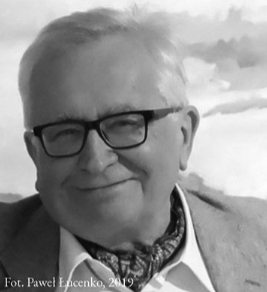
dr hab. Jeremi T. Królikowski
An architect, painter, and draftsman, he focuses on semiotics and phenomenology of architecture in his research work. He is the author of architectural and landscape projects and realizations. He has held numerous exhibitions of his work both in Poland and abroad. He has published over 100 texts [including: Elementy semiotyczne dzieła architektury, Studia Semiotyczne VIII, 1978; Nowomowa w architekturze, Architektura 4/1982] and several books [including: Interpretacje krajobrazów, 2006; Poetyka miasta socjalistycznego, 2021; Fenomenologiczna koncepcja Genius Loci Norberga-Schulza w zastosowaniu do architektury krajobrazu, 2025]. He is currently a professor in the Department of Architecture at Warsaw University of Life Sciences.
New Narratives in Architecture in the loop of time.
Contemporary narratives of architecture resemble the Tower of Babel, whose builders, united by a common and lofty goal of reaching the heavens, could not complete their work because, speaking different languages, they could not communicate. Ludwig Wittgenstein argued that architecture arises only where something can be glorified. Today, architecture praises nature, the environment, ecology, the carbon footprint, and reuse. What is new only reveals itself within a linear concept of time, which is not always applicable. Quantum theory of time suggests that time is not linear but entangled to such an extent that current events influence what has already happened.
A remarkable example of this entanglement is the Palace of Culture and Science in Warsaw. In introducing a new order, its builders relied on ancient forms, applying a recycling of historical forms drawn from Kazimierz Dolny and Zamość.
Another example is the Oslo Opera House. Its space allows for the free creation of diverse interpersonal relationships, enables the experience of intimate closeness and boundless intimacy, and allows for a dialogue between architecture and the landscape, as well as a dialogue with people. It grows from the depths of time, from the Norwegian genius loci. Thus, it is difficult to say which narrative is new and which is old.
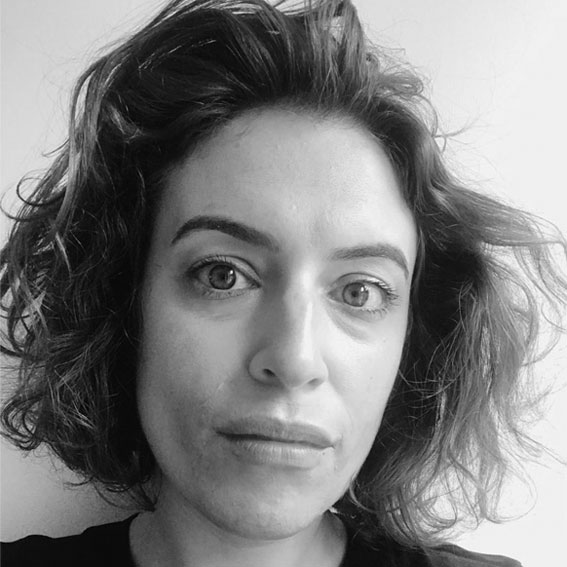
Urszula Koźmińska, PhD
is an Associate Professor at the Aarhus School of Architecture. In her design practice, research and teaching, she focuses on post-extractive architectural approaches and life-cycle design strategies, adaptive and material reuse, repair and maintenance, and reversibility. She explores those topics with the ecological awareness of the broader eco-systemic and trans-scalar entanglements of the design process. She is the author of multiple publications on ecological architecture, including books ‘Designing for the Climate Emergency: A Guide for Architecture Students’ (RIBA Publishing), ‘Building + Breaking: 8 Conversations about Spatial Justice’ (Danish Architectural Press) and ‘Time Matters’ (Ruby Press). Currently, she is a part of the curatorial team, led by Dominique+Serena, which is developing the exhibition in the Danish Pavilion for the Venice Biennale 2027.
uk@aarch.dk
Time Matters: architectural practices of accepting, avoiding, adjusting and future-proofing.
We live in “liquid times,” in spaces without permanent bonds, in a “patchy world” of simultaneously fragile and robust relations among human and nonhuman actors. The rationales of these interconnected networks unfold around a multiplicity of dependencies, locations, velocities, and viewpoints, creating complicated timelines that require poly-temporal worldviews. The buildings and their elements are not only what they are now but also what they were before and what they can become in the future, and everything in between, at the same time. It is obvious that we are no longer designing forever buildings. A lot has already been constructed. Discussions around the current climate crisis suggest that we should rather stop building and proceed in a more resource-conscious manner. Suddenly, diagrammatic, tabula-rasa concepts seem outdated. The ecological approach values what is already there, carefully examining transcalar enmeshment and accepting embedded ambiguities. More humble design practices take time to observe and notice, developing strategies that avoid unnecessary resource expenditures while adjusting the existing matter to current climatic and socio-cultural demands. New- built extensions are developed, accounting for entangled impacts, and favouring local and reversible building systems. My talk follows building life cycles and material flows, jumping between timelines, geolocations and scales to explore the ecological complexities of maintenance, repair and reuse practices. The narrative unfolds around a subjective selection of projects that navigate between the craving for architectural endurance and resource-conscious design while tuning into environmental and socio-economic uncertainties to imagine sufficient, porous and future-proofed buildings.
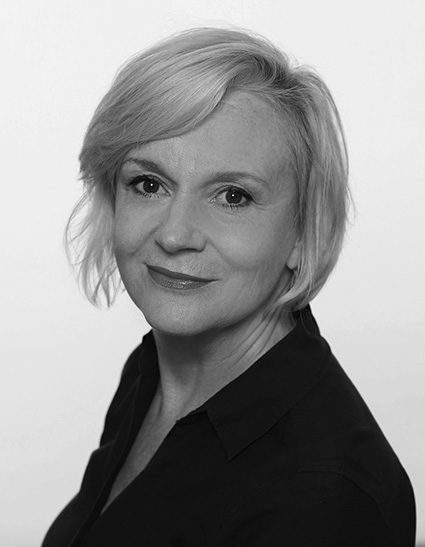
Małgorzata Minchberg, PhD
Visual artist, sculptor, Doctor of Social Sciences in the discipline of pedagogy, specialist in cultural and artistic education, cultural animator, curator, recipient of the Ministry of Culture and National Heritage scholarship, and interdisciplinary academic lecturer.
She studied at the Faculty of Sculpture at the Academy of Fine Arts in Warsaw (mentors: Grzegorz Kowalski, Stanisław Kulon, Adam Myjak, Jerzy Stajuda), graduating with distinction in 1994. She defended her doctoral dissertation, titled “Interdisciplinary Education through Art”, in 2021 at the Department of Media Education at the Maria Grzegorzewska University of Special Education in Warsaw.
She is the author of numerous artistic and educational projects, as well as publications in the fields of creative pedagogy, cultural education, and museum education. She has collaborated with many cultural institutions in Warsaw, including the Museum of Modern Art, the National Museum, the National Gallery of Art Zachęta, and the Copernicus Science Centre.
She has been honored with awards such as the EFC Roman Czernecki Award and the Impulse of Culture – Mazovian Award for Cultural Inspiration, along with the title of Cultural Inspirer.
Sustainable Design within the local cultural ecosystem.
The small pavilion in Wesoła is an example of an ecological approach to architectural design and implementation in the context of changing conditions. The project was originally intended for a sculptor’s studio, with functional needs that respect the private nature of the investment while also allowing it to serve the local community. Every effort was made to optimally preserve ecological, ergonomic, and aesthetic values (the main material is wood, rainwater tanks, mineral wool insulation, recycled windows, discounted plywood cladding, etc.)—the so-called “3E” approach. During the design process of the sculptor’s pavilion, attention was focused on ethics of care, meaning mindfulness toward the surrounding space and its users. This is an example of responsible design from an ecological, social, and cultural perspective.
In my practice as a sculptor and academic lecturer, the space itself is an educational tool, which was also the case here. On a small working area (50 m²), an exhibition space was included, with a glass window facing the street leading to a local educational institution. Children and parents walking to the nursery can observe the sculptures being created and experience the proportions and finishes of this wooden building, charmingly situated on the Mazovian escarpment. The project equally fulfills functional and educational roles.
During the construction of this dream space for my own creative work, the idea also emerged to support women in similar situations—those burdened by caregiving responsibilities, lacking time and space for creative expression, and facing financial limitations.
This presentation will emphasize the importance of consciously shaping the surrounding environment through education via art and creativity (including the method of educating through space), which the project embodies as a conjunction of private and social needs.
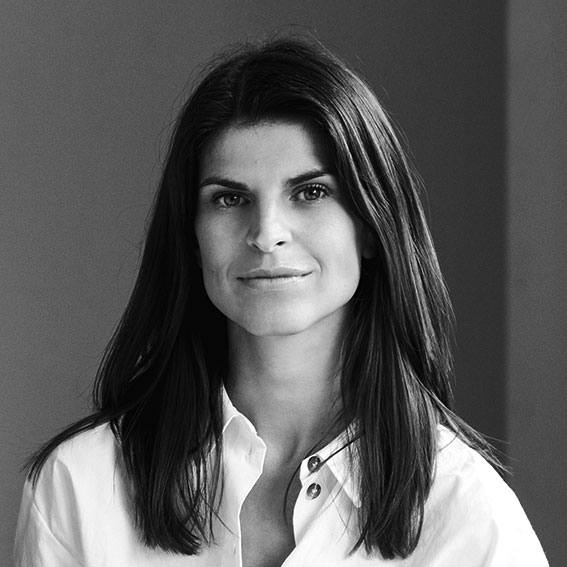
Alexandra Nikolova
is the co-founder of n/a, an architecture and design studio based in Copenhagen, Denmark, with a strong international focus. Rooted in Scandinavian culture, the studio approaches design at all scales from a humanistic and pragmatic perspective, working exclusively with bio-based and recyclable building materials. With a Master of Science in Architecture from Aalborg University, Denmark, Alexandra brings extensive experience from some of the world’s most renowned architecture and design offices in Beijing, London, and Copenhagen. Her approach to architecture integrates technical, artistic, and humanistic elements, shaping designs that are both functional and sustainable. At n/a, sustainability is at the core of every project. The studio houses a curated collection of over 200 bio-based materials, categorized for all aspects of construction—from foundations to interiors. By investigating the past and understanding the present, Alexandra strives to create innovative, user-oriented solutions that contribute to a circular economy. The studio’s guiding principle, “never boring / always biobased” reflects Alexandra’s commitment to redefining architecture through sustainable, forward-thinking design.
Bio-based Architecture: The Narrative of Today.
As the climate crisis deepens and resource scarcity becomes a defining challenge of our era, the construction industry must undergo a radical transformation. Architecture cannot continue to be a passive consumer of resources it must become a proactive agent of ecological responsibility, regenerative design, and long-term material care. In this presentation, architect Alexandra Nikolova explores how bio-based building materials and innovative architectural practices can shape a more regenerative future. By sharing the journey and philosophy of her studio, nikolova/aarsø, she outlines how a new generation of buildings can be designed with respect for nature, local economies, and human well-being. Through pioneering work with biogenic materials derived from renewable biological sources such as hemp, flax, timber, and upcycled agricultural waste nikolova/aarsø challenges the conventional norms. Their mission is to redefine what sustainable architecture looks and feels like, while setting new benchmarks in design integrity, beauty, and performance. This presentation highlights the theoretical and technical frameworks behind the practice, showcasing key projects that exemplify their bio-based design philosophy, including the award-winning Tversted House and the innovative and explorative Hemp House project built with industrial hemp products.
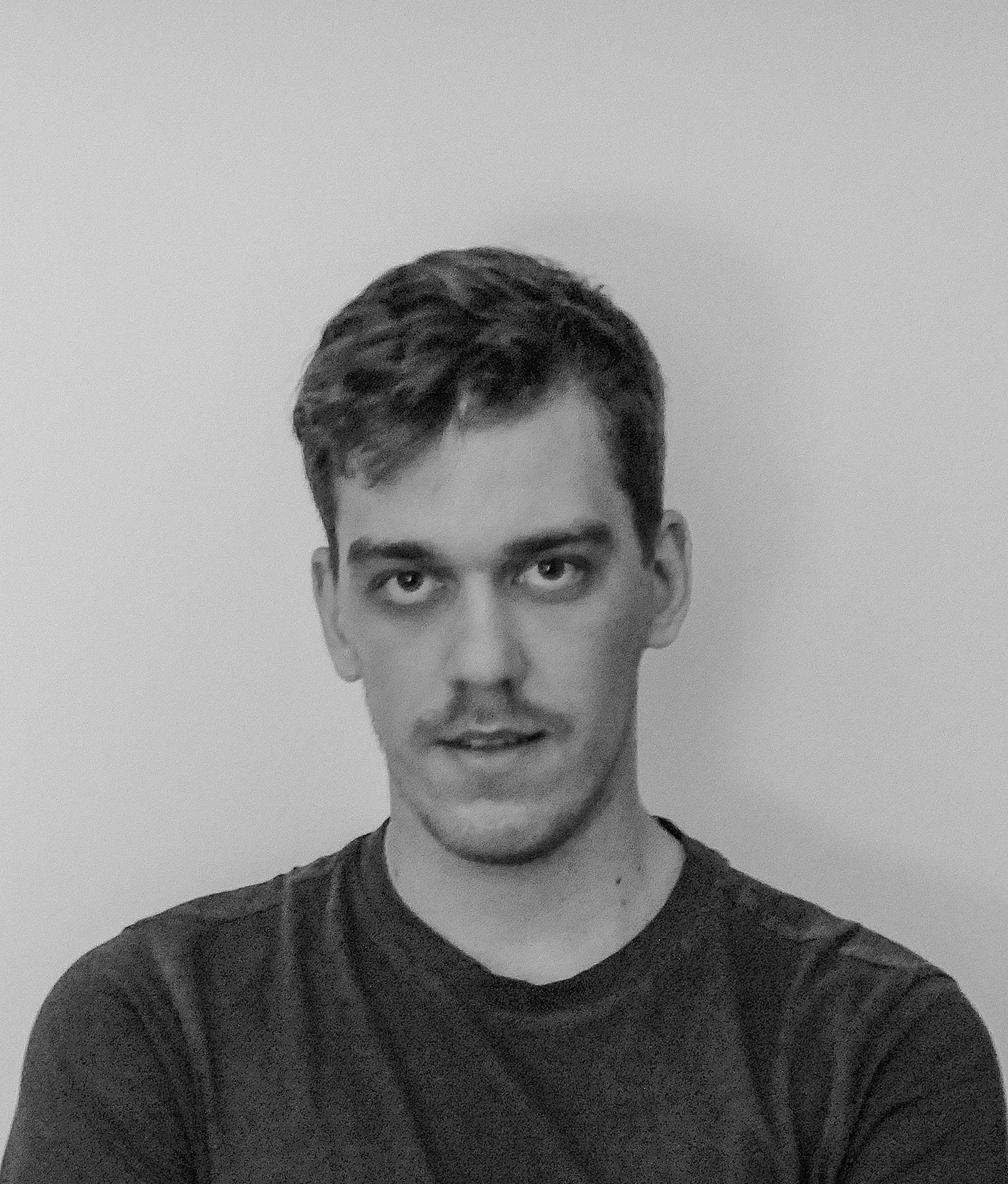
Marek Hlavicka
is an architect and researcher graduated from master’s degree at the Academy of Architecture, Arts and Design in Prague (UMPRUM) in 2024. Nowadays he’s a Ph.D. student at the Faculty of architecture, Brno University of Technology. His thesis is called „Architecture as a means of creating a new model(s) of collectivity“ and the research is currently focused on informal structures and architectural interventions emerging in the areas of so-called „threshold space“ as defined by Stavros Stavrides – environment where new models of collectivities might emerge.
He teaches in a speculative design & research studio at the Faculty of architecture in Brno, founded together with urbanist Katerina Singer and multimedia artist Tamara Spalajkovic in 2024. Later on they formed a research group „360+ Lab“, discussing a societal and environmental spatial justice through lens of artistic and architectural research. He is also a practicing architect with a good record in public competitions.
Planýrka – a multispecies commons?
The speech will introduce a research , held by the group 360+Lab – investigating Planýrka – a post-cultural environment in the city of Brno, Czech Republic as an example of unique site in the urban structure of the city – an urban wilderness providing a shelter to otherwise marginalised entities.
Planýrka – a plot nearby the city centre once planned to be developed into the large-scale site full of sports facilities , so called „Brno’s sports dream“ (J.Sedlák, Š. Svobodová, 2015) went through a turbulent evolution during the 20th century, specifically at it’s end due to socio-political twist from socialist era to just-born democracy in Czechia.
Because of several societal, economical and urban planning crisis due to unclear land ownerships the plot went through ever since, it has to deal with an abandonment and a large-scale environmental succession. During the times it has transformed not only into post-cultural landscape itself , but into the area that corresponds to the concept of „Threshold space“ (Stavros Stavrides, 2010) – an in-between territory existing beyond hegemonic urban planning and visibility of mainstream society – environment no longer governed by linear developmental narratives or programmatic use.
Within this environment, informal architectures and alternative forms of collectivity emerge as the area provides shelter not only to a marginalised social groups but also to specific endangered species of plants and animals. This interspecies assemblages fostered by the site’s unique microclimate and topography contribute to the possibility of a multispecies commons to emerge as a space of never ending spatial negotiation (Stavros Stavrides, 2016) between the species as it’s not only humans appropriating the space and existing structures at Planýrka. The research is focused on mapping and documentation of these spatial appropriations as a specific forms of architecture. Discussing the idea of a multi species justice in architecture and challenges dominant contemporary paradigms of spatial control. Methodologically, the study combines mapping, semi-structured interviews, and the participatory visual method of photovoice to identify informal structures, document spatial appropriation, and interpret the symbolic and material practices. With it’s speculative pedagogies, we also try to engage public and other locals living nearby through collaborative workshops and public walks to emphasise the importance of this specific landscape typology in the context of urban system – as a site where bottom-up practices of inhabitation resist extractive urban logics and articulate new, relational modes of co existence.
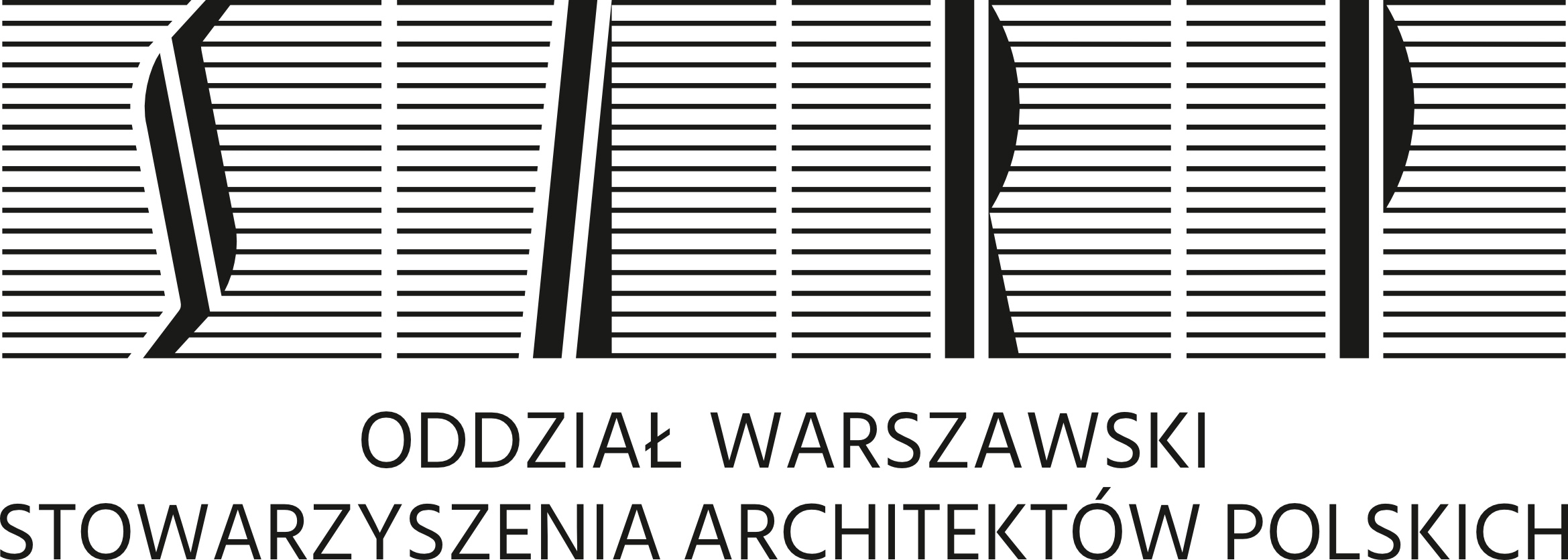
Anna Tofiluk, PhD – Sustainable Architecture Group, Association of Polish Architects, Warsaw Branch (OW SARP) – Conference patron’s speech
Environmental Design Department, Faculty of Architecture, Warsaw University of Technology
Warsaw Green Building Standard – a tool for climate-responsible architectural design.
The Warsaw Green Building Standard is a municipal initiative that sets new frameworks for responsible design of city-funded buildings in the capital. Based on interdisciplinary collaboration among experts and socio-ecological dialogue, it aligns with current trends emphasizing care for natural resources and the need to seek alternative, sustainable, and regenerative methods of architectural practice. The Standard defines both mandatory and optional requirements concerning energy efficiency, blue-green infrastructure, circular economy, user health, and the comfort of city environments. Its implementation is a practical response to urgent data on emissions, resource use, and climate change, offering both practical and theoretical solutions that contribute to an expanded narrative about architecture of care, ethics, and new ways of interpreting design practice.
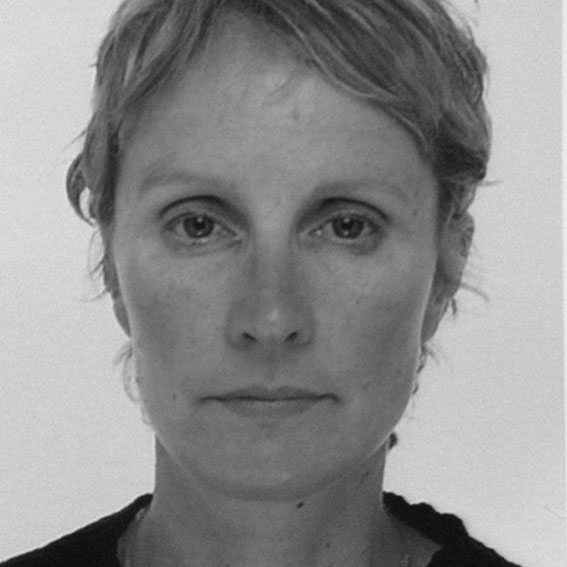
Dr Corinna Dean
is a senior lecturer at the School of Architecture + Cities, University of Westminster, London, a member of the Expanded Territories Research Group, UoW and most recently a recipient of the Gender Ecologies Pakistan, British Council project. She was awarded a Collaborative Doctoral Award with the London School of Economics and Tate Galleries, exploring cultural regeneration. She has exhibited at the RIBA, the Isle of Sheppey, South London Gallery, and Kochi Muziri Biennale, Kerala. Corinna’s research interests look at the intersections between landscape, infrastructure and urban ecologies exploring wet ontologies through projects such as the Eco-Brick and Liminal Listening, Whispers of Amphibious Worlds workshop held at the Shrishti Manipal School of Art and Design, Bangalore. She holds a BA Arch and MArch from UCL, London.
Liminal Listening: Whispers of Amphibious Worlds.
Liminal Listening: Whispers of Amphibious Worlds is an ecocultural learning platform that bridges art, design, and ecological engagement in which I collaborate with other designers, architects, artists and communities working across multiple sites. My recent field work, through the project, “Gender Ecologies”, established a collaboration with river activists between Pakistan and the River Lea, London’s second river. The project sought to uncover more than human justice, between colonial, and industrial landscapes. Our reciprocal projects in the Indus, (Karachi), Ravi, (Lahore) and River Lea, (London), explored actions for new socio-environmental relationships through narrative and the moving image. My work seeks to frame an approach to “landscape literacy” referencing Anna Tsing’s “Patchy Anthropocene”, and how we can better “read” landscapes referencing the films from the Gender Ecologies project and my recent engagement with the River Lea through co-production projects with nature and communities. These projects, which include floating reed beds supporting phytoremediation, and an outdoor learning classroom for transitory environments, will be discussed to illuminate the concept of Liminal Listening.
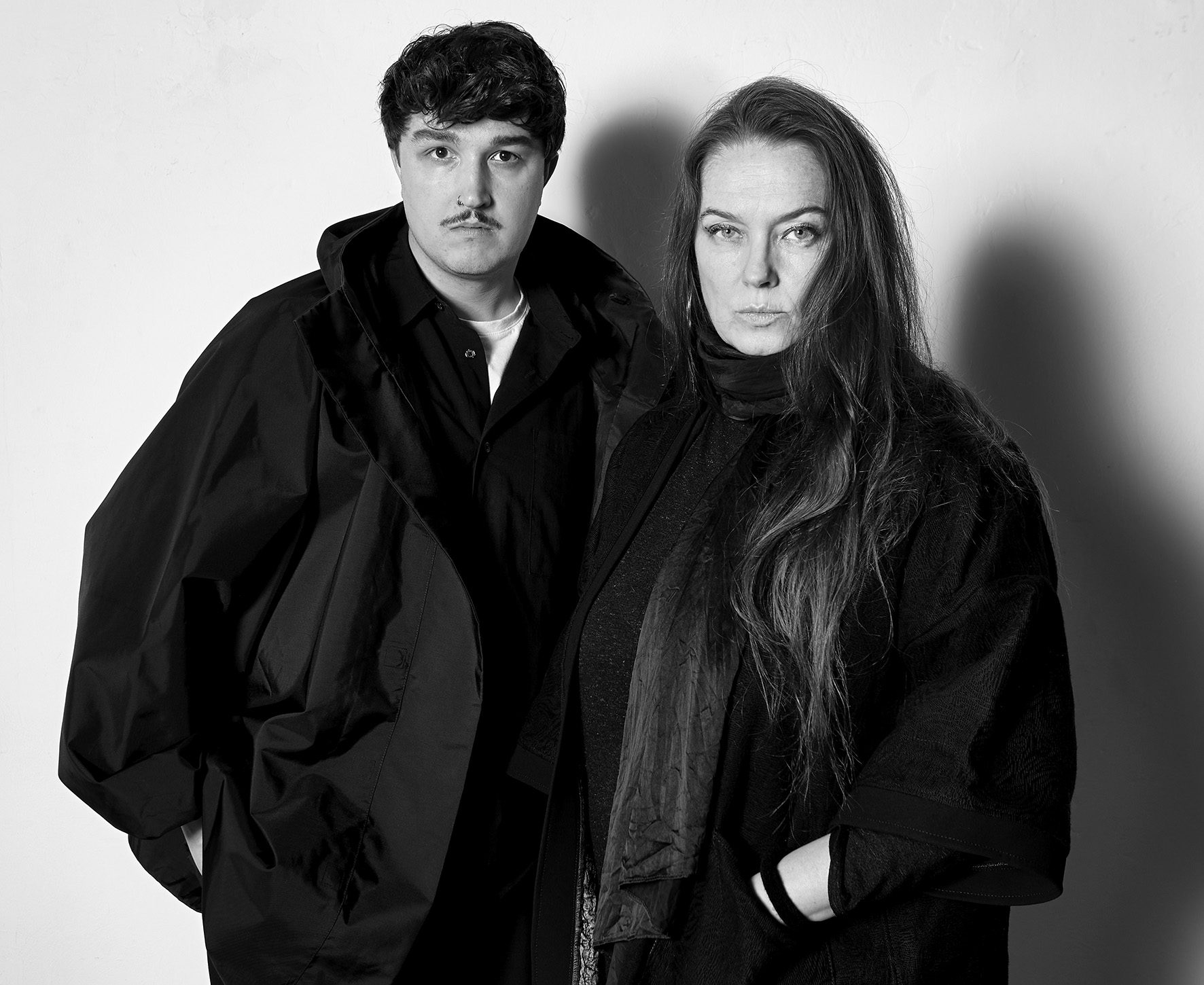
dr hab. Monika Zawadzka / Karol Drobniewski
Architectural Intelligence is an initiative founded in early 2025. We are a team unafraid to cross the boundaries between architecture, technology, and the humanities. Our ideas emerge from accumulated experience, analysis of real needs, and years of observation of urban spaces. We combine professional and academic expertise gained both in Poland and in international contexts.
Karol Drobniewski is an urbanist and PhD candidate at the Academy of Fine Arts in Gdańsk, whose research practice sits at the intersection of art, architecture, and technology. He explores artificial intelligence as a tool for interpreting space, analyzing the local identity of places, and creating contemporary languages of architectural storytelling. His research focuses on the concept of the “code of place” in the context of generative technologies, treating AI as both an analytical and creative medium.
Monika Zawadzka is an architect and anthropologist; a researcher of over 40 European cities; and a professor at the Academy of Fine Arts in Gdańsk, where she leads the Urban Architecture Studio as well as courses and laboratories in cultural anthropology. She focuses on cities with European-style spaces—their atmosphere, cohesion, and geographical diversity. She analyzes local methods of shaping public spaces through studies of urban form identity. She is particularly fascinated by the phenomenon of streets, along with the continuous building façades that shape their walls.
Algorithms of Care: Between machines, locality, and regeneration.
In the face of deepening ecological, social, and spatial crises, contemporary urban architecture is confronted with the necessity to redefine both its design methods and the language through which it communicates. At the heart of these transformations arises the question: can an algorithm—a set of actions created by humans—speak about a place from a perspective of care?
Contemporary inquiries into urban design tools emerge from an inherited context. Modernist transformations, while raising public health standards and improving infrastructure, simultaneously weakened urban collectives, disrupted the continuity of the built environment, and destroyed systems of shared spaces. We have lost the ease of understanding context, as well as the ability to cultivate the aura and power of cities. This crisis continues today.
Since there is no turning back from cities as dense hubs of life on Planet A, the crucial question remains: what kind of cities will they be? Is it possible to develop models of communal living that combine technological advancement with local climatic conditions and the social intensity of urban life?
We explore the potential of collaboration with machine intelligence in the context of design oriented toward locality, regeneration, and responsibility. We are working on [AI]dentity, a tool that quickly and without loss of quality identifies features of a space’s local identity. Its role is to understand place and support design processes rooted in locality. We propose viewing algorithms not as instruments of optimization, but as mediators of design sensitivity—capable of strengthening the connections between care for place and urban complexity.
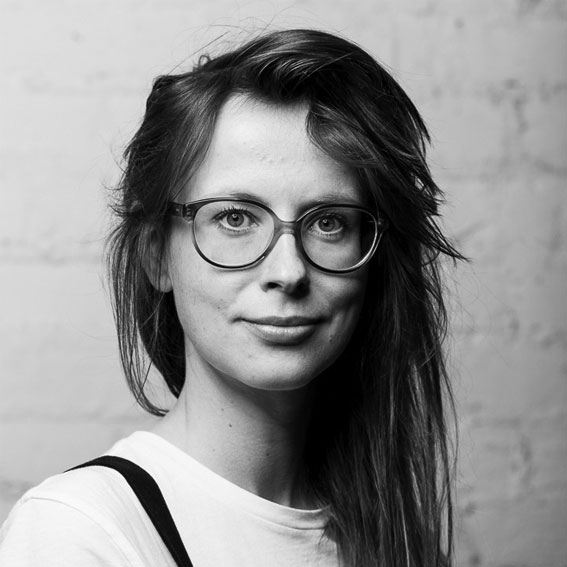
Agnieszka Kacprzak
is an architect and educator affiliated with the Faculty of Interior Architecture at the Academy of Fine Arts in Warsaw. In her design and research work, she focuses on deepening the concept of Regenerative Architecture, sensitive to the rhythm of nature and attentive to the well-being of inhabitants and the environment. In 2020, she co-founded Architektura Wrażliwa studio, where through the project A House That Serves Many, she proposes a new approach to house construction, raising questions about the materials and methods used, as well as the environmental costs of our choices. The project utilizes natural and recycled materials such as hemp, wood, clay, and recycled glass. She is interested in using construction leftovers and seeking a new aesthetic in architecture that accepts imperfections and is open to the unpredictable effects associated with them. This project embodies her concept of Sensitive Architecture, enhancing responsible building practices.
House from Nature, Serving Many
In times when the call to stop building grows louder, this project is an attempt to answer the question: how can we design a house that becomes a space of hospitality, coexistence, and exchange? How can we build a house that is healthy, durable, and gentle to its surroundings?
House from Nature is a process that becomes an exercise in living together. On a single plot, two houses are being built – a decision driven by care for resources and the belief that it is easier to share space than to multiply it. Community raises questions: how can we live close to one another, maintain privacy, and at the same time build relationships?
It is born in the rhythm of materials we trust: hemp, wood, clay, foamed glass, and reclaimed resources. Each carries a story – of the soil that grows plants, of trees that provide shade and shelter, of the circulation of things that find a new purpose. The question “what are we building with?” guides all our decisions. Choosing natural, unconventional materials is not easy – it carries consequences and requires new construction skills – yet working in a community makes it easier to make these demanding decisions and encourages experimentation. The house becomes a teacher: wood teaches patience with time, hemp shows that a wall can breathe and insulate, and foamed glass reminds us that waste can become a foundation.
Construction does not proceed quickly or linearly. It unfolds in stages that allow observation, reflection, and adjustments. This slowness becomes an ally. Sensitive design means being ready to accept that materials, people, and circumstances can change the course of a project.
Architecture, as I understand it, is neither a fortress nor a perfect product. It can be a gesture of hospitality – a space that does not dominate, but coexists. Hospitality here means openness to encounter: with other people, with the environment, with time. In today’s world, this openness is particularly important – the house becomes a dialogue, a place for exchanging knowledge and experiences.
In this sense, House from Nature is not a finished manifesto, but a question: how can we build without destroying? How can architecture be attentive and hospitable, rather than dominating? It is an open space – for questions, doubts, and conversations about possible futures of architecture.
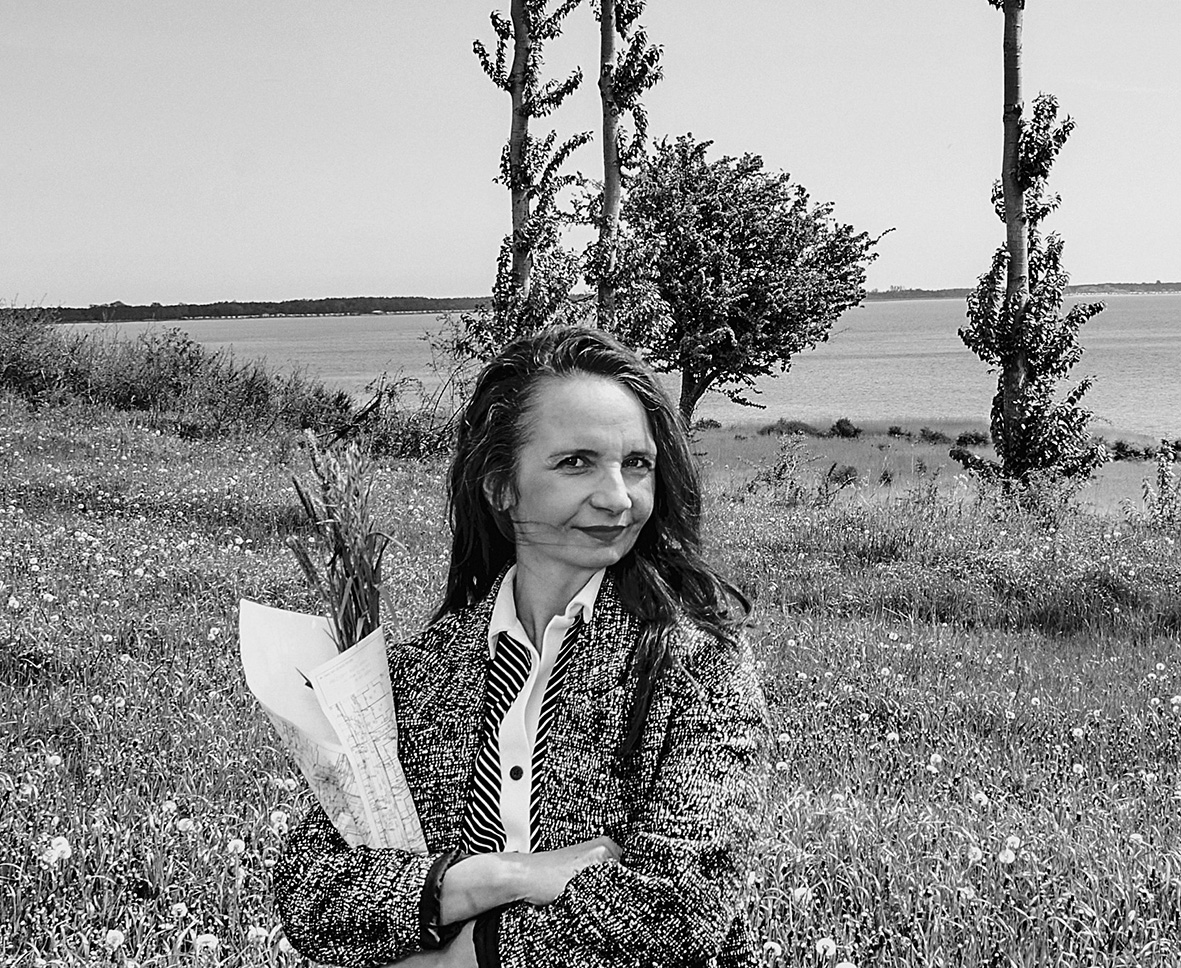
Bogumiła Kapica
A graduate of the Gdańsk University of Technology and the Academy of Music, an active architect and cellist. Owner of the BOKA projekt design studio, which bases its activity on recyclable and natural materials. An experienced architect with building licenses and qualifications, a member of the Pomeranian Chamber of Architects. Lecturer at the Faculty of Architecture at Gdańsk Tech. Member of the board of the National Association of Natural Construction. Coordinator of the Natural Building Festival. Passionate about the idea of zero waste, implementing it in everyday life, construction and architecture. An active educator at the National Centre for Culture and the Chamber of Architects, she conducts trainings in the field of zero waste and natural construction. Privately, she is involved in community activities for the benefit of her neighborhood in Wrzeszcz, the community in educational units of three children and the Neoarte Association as an enthusiast of contemporary art.
www.bokaprojekt.pl
bogumila.kapica@pg.edu.pl
Recycle Reuse Recovery in architecture and construction – challenges in the Polish reality.
We are witnessing the process of transforming the law in the face of climate change. Politically, we are moving towards sustainable development, which is insufficient for the survival of our species. The slogan of balancing the needs of the environment, health and the economy leads to excessive devastation of natural resources. Recovery seems to be a very important branch of architecture development and a form of narrative about it.
The paper will begin with a brief overview of the history of recyclable materials in the history of mankind, followed by research on the recyclable properties of building materials and their implementation. Construction procedures and processes and their participants will also be described, along with highlighting the challenges in the Polish reality. Finally, the best European practices in the field of reclaimed architecture will be presented along with conclusions for the Polish local reality.
The presentation is intended to encourage reflection on the redefinition of the concept of architecture, highlight the areas in which architecture should develop and require support, and inspire practical action towards recycled architecture.
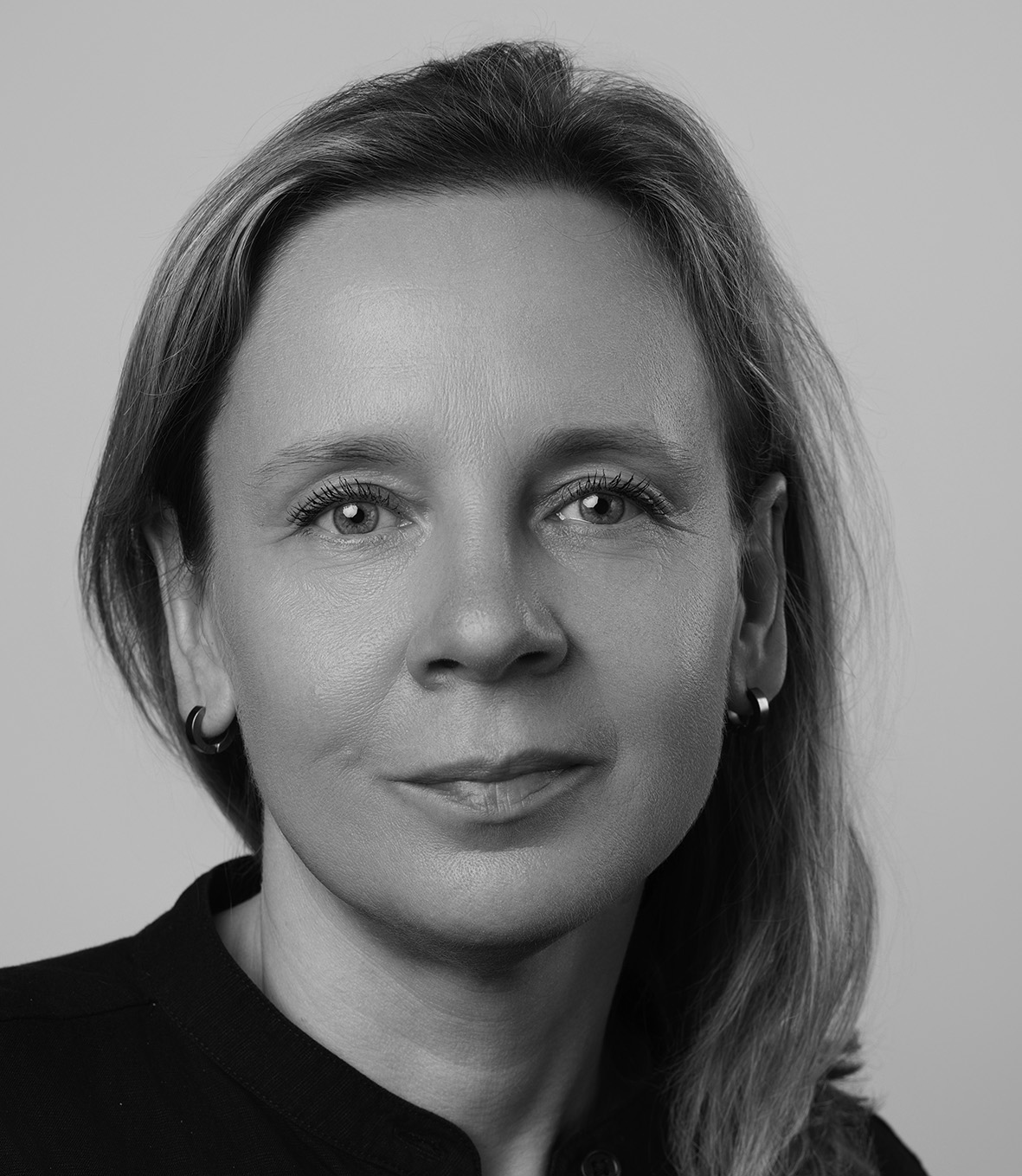
Katarzyna Uchowicz, PhD
A historian of architecture. She works at the Studio for the Documentation of 20th and 21st Century Architecture at the Institute of Art of the Polish Academy of Sciences (PAN) and at the Interfaculty Department of History and Theory of Art at the Academy of Fine Arts in Warsaw. She gives lectures on the history and theory of architecture as well as 20th-century spatial planning. Curator of the exhibition Awers/rewers. Architect Bohdan Lachert at the Museum of Architecture in Wrocław, and author of Eternity and a Moment. 1918–1939 – Architecture as a Tool in Constructing Polish National Identity (Architecture Centre, 2017); The Reargard of Modernism. Catalogue of Projects and Realizations by Bohdan Lachert and Józef Szanajca (Institute of Art PAN, 2017); and Awers/rewers. Architect Bohdan Lachert (Museum of Architecture in Wrocław, 2018). Co-author (with Małgorzata Omilanowska) of POW. Illustrated Atlas of Powiśle Architecture (Architecture Centre, 2017, 1st edition; 2020, 2nd edition). Co-editor (with Aleksandra Kędziorek and Maja Wirkus) of Archipelago CIAM. Letters of Helena Syrkus (National Institute of Architecture and Urban Planning, 2019), which was awarded the 6th Warsaw Architectural Award in the category of “Architectural Event” (2020).
Subjectivity and Peculiarity: Barbara Brukalska, a 20th-century Architect.
This presentation is dedicated to the architect Barbara Brukalska. This deliberately chosen case study focused on a single female designer also serves as a starting point for exploring 20th-century women’s architecture through the lens of building subjectivity and – in this specific case – peculiarities such as collections, travels, writings, sketchbooks, and photographs. These artifacts testify to her attentiveness and openness to the surrounding world. It can be argued that the architecture she shaped relied to a significant extent on seemingly non-architectural categories such as sensitivity, natural cycles, nature, astronomy, the elements, and the senses.
The choice of an architect who is well-known and recognizable aims to examine her workshop with journalistic curiosity and to reveal the multidimensional, plastic-poetic character of Brukalska’s work. The foundation for this study is the preserved archive. Architects’ archives always constitute a form of record, and the researcher’s challenge is to create tools for interpreting it, and – even more difficult – to find the key that allows such interpretation. In the case of Barbara Brukalska, the most accurate term seems to be imaginarium. The preserved collection of documents and artifacts hides a multi-layered story of a woman whose interests and fascinations extended far beyond architecture. She sketched and pressed plants, planned gardens, designed rooms for silence, and observed birds. She collected folk art and invited amateur female artists to collaborate. In her interior architecture projects, she created microcosms for women, inviting other designers to participate. Participation was her chosen tool for communicating with the audience.
Telling the architect’s biography in a way different from before allows us to reveal a familiar/unfamiliar portrait, in which marginalia, notes on the back of pages, photographs, and personal objects play a significant role – similar to how literary scholars examine writers’ desk drawers, correspondence, and diaries. The architecture shaped by Barbara Brukalska is largely autobiographical. On one of her typed manuscripts, she handwrote: “Women in a freelance profession – that would be a good article.” To this day, it remains unknown. It is time to discover it.
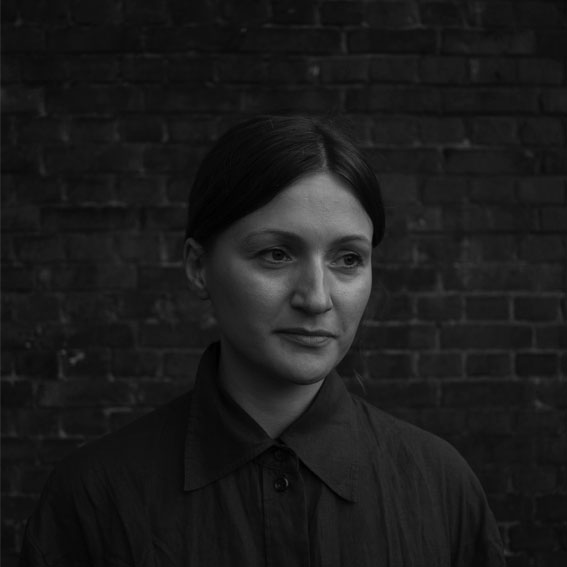
Anna Zań
studied at the Academy of Architecture in Amsterdam. In 2022 she was selected as one of the winners of Archiprix NL ’22 and shortlisted for EUmiesAwards – Young Talent. In 2023, she was awarded a Talent Development Grant from Creative Funds NL to further develop her independent practice. Since 2021 she has been a guest lecturer at the Academy of Architecture in Amsterdam and Rotterdam. She focuses on the cultural, environmental and artistic value of the use of raw materials. Zan’s work is an exploration of new, regenerative building materials aimed to contribute to the new, sustainable, local material culture. Since 2022, she has been conducting local research related to the use of raw earth in Dutch construction as an alternative to traditional brick building.
Towards New Architectural Practice: On Relearning the Ground – Sand, Silt, Clay, and Stone.
Whether it is a high-rise building, a bridge, or a single-family house, since the beginning of the 20th century, concrete (limestone fired at around 1,450 °C, mixed with sand, crushed stone, and water, often reinforced with steel) has become the default building material. It has enabled us to build taller structures, achieve larger spans, and complete construction in shorter periods of time. While ‘fast’ materials such as concrete were beneficial – for example, in the context of post-war reconstruction and the urgent need for rapid rebuilding – they do not address the challenges we face today, particularly the climate and biodiversity crises, which are significantly driven by the building sector and the production of these materials. Additionally, billions have been spent developing these technologies and funding academic research, creating an educational bias that limits contemporary designers’ understanding of unprocessed raw materials—such as earth and stone—and how to design and build with them.
When I entered architectural practice in the Netherlands ten years ago, I was confronted with the realities of our industry. At that time, concrete and steel structures, together with EPS or stone wool insulation and fired brick cladding, were the dominant material palette. Sustainability was addressed primarily through the application of solar panels, highly insulated building envelopes with more complex windows and doors to minimise heat loss, green roofs, facades full of trees, and advanced operating systems to reduce energy consumption. Yet the basics were still often neglected: the sustainability and total life cycle of building materials.
The closure of the Netherlands’ first and largest cement factory signaled a turning point, inspiring me to explore building with local, unprocessed ground as a path forward—an approach that not only addresses environmental responsibility but also a method of building that allows us create spaces that are healthy for us: spaces that breathe, maintain optimal humidity levels, and absorb and release heat naturally.
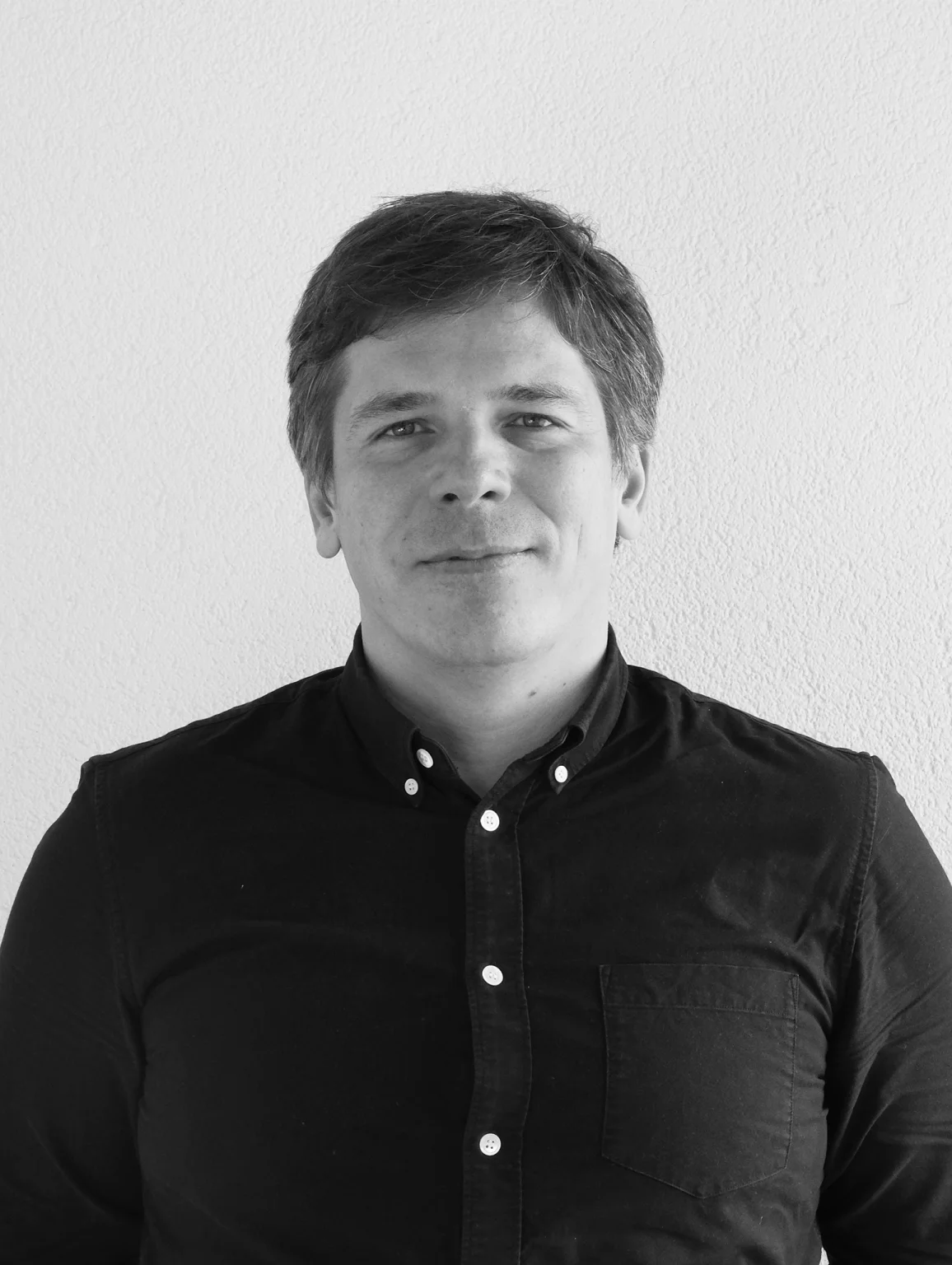
Artur Borejszo
is an architect (NL) and landscape & urban designer exploring new narratives for cities through circularity,
biodiversity, climate resilience, and social cohesion. As an Associate at LOLA Landscape Architects, he leads projects that
turn pressing ecological and social challenges into design opportunities. His work on Bajes Kwartier in Amsterdam and the
Upside Park strategy in Eindhoven sparked Soil-Lab – a living experiment that transforms waste streams into new fertile
grounds, envisioning future cities as living, productive ecosystems. Artur’s approach merges design, strategy, and
research, creating projects that regenerate landscapes, reconnect communities, and reimagine the metabolism of urban
spaces. He lectures at TU Delft and contributes to international debates on how architecture and landscape can actively
shape just, inclusive, and resilient futures.
Upside Park & Soil-Lab –From Waste to Wild Regenerating Cities Through Circular Soil and Living Infrastructure.
Commissioned by the Municipality of Eindhoven, LOLA Landscape Architects developed Upside Park—a rooftop greening strategy with a bold ambition: to transform local waste streams into fertile living material and turn the city’s roofs into thriving ecosystems. Extracting peat and pumice depletes distant landscapes and carries a heavy transport footprint. Instead, we propose to make substrates locally. Compost from municipal and household green waste, together with crushed demolition materials such as bricks, concrete, and aggregates, form the basis of a new, circular soil practice.
To put this vision into action, Soil-Lab was created: a three-year experimental site at Strijp-S that functions as a living laboratory. Here, soil-making is performed live—processing bricks, concrete, green waste, and excavated topsoil substrates—to render decomposition, microbial colonization, and remediation visible. Carefully selected planting strategies test which combinations of substrate mixtures and plant communities perform best under urban conditions of heat, drought, and compaction while supporting biodiversity and
pollinators.
Yet Soil-Lab is more than an experiment: it is a stage and a catalyst. During Dutch Design Week, the laboratory invites the public, designers, and policymakers to witness this transformation, embedding the narrative of local circular soil into collective imagination. By rejecting the sanitized image of the city surface, Soil-Lab reframes urban ground as dynamic, living infrastructure and links its results to Eindhoven’s broader Groenplan Centrum.
The outcomes will be consolidated into 40 out of 040 Layer Landscapes—a practical toolbox of substrate-plant combinations for roofs, courtyards, and parking decks—offering directly applicable strategies for municipalities, developers, and residents. This toolbox makes the project scalable and adaptive: a model for other cities to turn waste into ecological capital, reduce dependence on imported substrates, and regenerate their own urban soils.
By situating ecology, material cycles, and biodiversity—not aesthetics—as the central value in planning and design, Soil-Lab reframes architecture and landscape as regenerative practices. Eindhoven becomes a prototype city, demonstrating that soil is not just ground to build on but a living medium for climate resilience, social activation, and the creation of new narratives for urban life.

Kasia Nawratek
is a lecturer at the Manchester School of Architecture and a writer. Her research interests focus on responding to the climate crisis in architecture from a posthumanist perspective and the application of literary and narrative methods in the design process and as research tools in architecture. She is the editor of the book Space and Language in Architectural Education: Catalysts and Tensions (Routledge, 2022). Her teaching practice is inspired by the dialogical philosophy of Mikhail Bakhtin. She is currently working on a book about alternative pedagogical practices in British architectural education. She was awarded the Kornel Makuszyński Literary Award for her book Kresek, Bartek i całkiem zwyczajny początek (Ezop Publishing, 2017). Her latest book for young readers Ja, Świnia was published in 2023 by Dwukropek Publishing.
Architecture as World-Building.
Every architectural project tells a story about a future we deem both possible and desirable. Those stories are spatial actualisations of broader narratives that shape how we understand the world. The projects we make reflect our worldview, our place within it, and our agency to reshape it. Each project is, at once, a projection, a speculation, and a wish. Which narratives do we strengthen—or unsettle—with the projects we create? And how much responsibility will we assume for the futures we project?
Poster Exhibition
An exhibition will accompany the conference. Authors of the works:
Miguel Angel Ajuriaguerra – Universidad Rey Juan Carlos, Madrid
Marta Czeczko-Skruczaj – Academy of Fine Arts in Warsaw – Does Interior Architecture Have a Gender?
Izabela Milke-Jeż – Academy of Fine Arts in Warsaw – For whom?
Zuzanna Rosińska – master thesis TU Delft – Archive Fever
Samuel Stasik – Academy of Fine Arts and Design, Bratislava – Architecture More-Than-Human. Mycelium Structures for Regenerative Ecosystems
Kamila Szatanowska – Academy of Fine Arts in Gdańsk – Exhibition Design and Curation: “~enough. wystarczająco. wystarczy. dość. dosyć. dostatecznie.”
at Gdynia Design Days 2024 “Gdynia-Zdrój”
Joanna Dudek – Academy of Fine Arts in Warsaw – Moving Towards an Ethics of Care
Anna Plewka – Academy of Fine Arts in Warsaw – Domestic Fabric – Ordering Everyday Life
Klaudia Majewska – Academy of Fine Arts in Warsaw – 24,3 m²
Łukasz Danilczuk, Ewa Maniak, Karolina Rorat – Warsaw University of Technology – FIRST AID KIT – Micro-architecture of Care. A Temporary Housing System as a Response to Migration and Climate Crises
Marta Akincza, Katarzyna Domagalska, Malwina Gruszecka – National Institute of Architecture and Urban Planning – Close to Earth
Aleksandra Redzisz – Arch. Dipl. USI AAM – Floating Grounds: Sky garden
Iwona Kalenik – Academy of Fine Arts in Warsaw
Venue
Academy of Fine Arts in Warsaw Auditorium
Wybrzeże Kościuszkowskie 37/39
00-379 Warsaw
Scientific Committee
dr hab. Bazyli Krasulak, prof. ASP
prof. Jerzy Bogusławski
dr Dariusz Śmiechowski
dr Iwona Kalenik
dr Katarzyna Bucholc
Agnieszka Kacprzak
Zuzanna Spaltabaka

